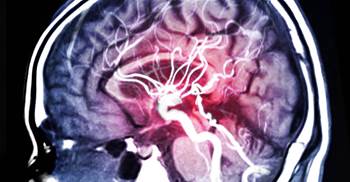A new research collaboration led by Fujitsu Australia aims to use artificial intelligence to detect and monitor brain aneurysms faster and more efficiently.
Brain aneurysms - weaknesses in blood vessels that can fill with blood and rupture - occur in up to eight percent of adults, but accurately and quickly identifying them on scans can be challenging.
The project will initially focus on refining Fujitsu’s AI capabilities, with a view to creating a fully commercialised solution that can be distributed through radiology practices in Australia, before eventually being exported into global markets.
GE Healthcare will contribute the medical imaging technology behind the trial, with Macquarie University and Macquarie Medical Imaging providing clinical expertise for the development and testing of the AI technology.
One of the main outcomes of the project is to validate an AI algorithm that can highlight blood vessels that may have one or more aneurysms within an arterial ring at the base of the brain known as the ring of Willis.
It’s also hoped the algorithm will allow practitioners to track identified aneurysms over time, providing radiologists with a valuable diagnostic tool while giving greater peace of mind to patients that known aneurysms are being closely monitored over time.
Additionally, the AI could also be used as a planning tool for the surgical insertion of a stent to prevent aneurysm rupture.
Macquarie Medical Imaging diagnostic and interventional radiologist, professor John Magnussen, said the partnership between the organisations is an amazing opportunity to address the problem of rapid and accurate aneurysm diagnosis.
“Even in ideal circumstances, detecting brain aneurysms is time and expertise intensive and missed aneurysms can have terrible outcomes,” Magnussen said.
“By creating an AI assistant to automatically flag potential aneurysms and allow for accurate follow-up, we can make a huge difference to patient care.”
President and chief executive of GE Healthcare A/NZ, Matt Tucker, added that the technology will hopefully bring greater capabilities to smaller radiology practices.
“As the consequences of brain aneurysm rupture are often fatal, effective and expedient detection is crucial. Unfortunately screening and monitoring takes time and specialist expertise not afforded by every radiology practice.
“The application of AI can give doctors better insights more quickly and produce fewer variable results.”
The project has been granted $2.1 million from the Department of Industry, Innovation and Science.
Aneurysms are present in between two and eight per cent of adults, with multiple aneurysms in more than 10 percent of these people.
Rupture of an aneurysm causes brain haemorrhage in 85 percent of cases, leading to death in 30-40 percent of people and 20 percent permanent disability in those who survive.


























